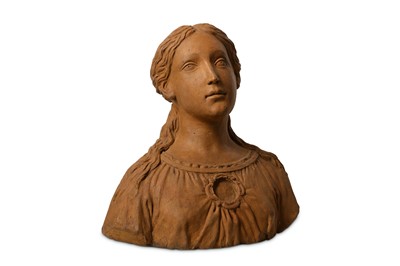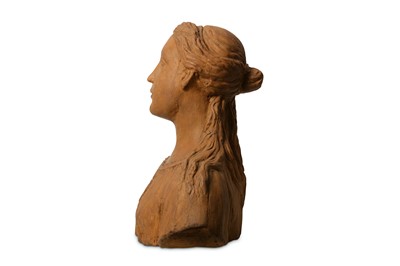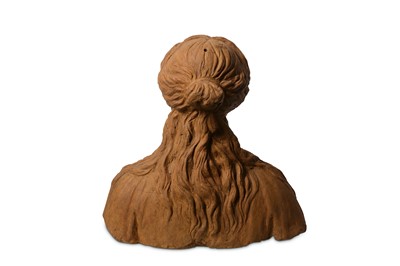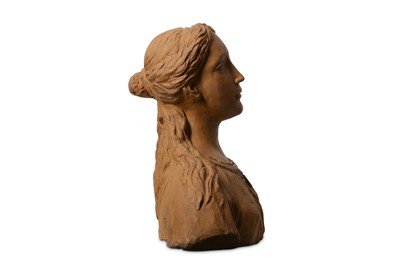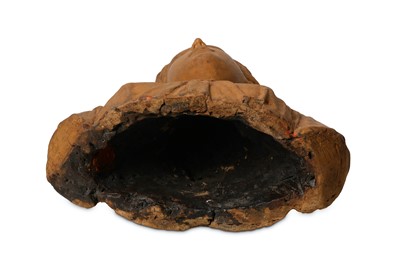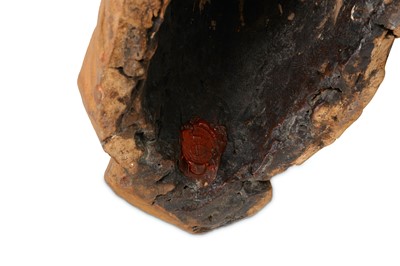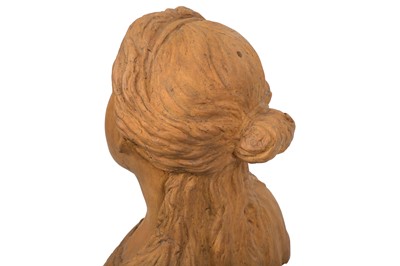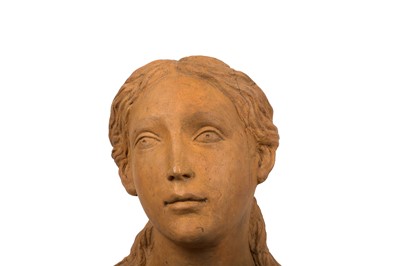10th Mar, 2020 14:00
Fine European Works of Art & Clocks
AN ITALIAN RENAISSANCE TERRACOTTA RELIQUARY BUST, PROBABLY 16TH CENTURY the young female saint or Virgin Mary with centrally parted hair flowing down her shoulders, wearing a gown with circular aperture to reveal the relic, now filled, the interior with an old red wax seal, the exterior later painted, 37cm high The form of the present bust, modelled in the full round and cut at the shoulders was developed in the 15th century but probably derived from an ancient prototype. As well as religious and reliquary busts, portrait busts of particular patrons were produced for specific commissions, for example see the late 15th century terracotta portrait bust in the Metropolitan Museum, New York which depicts a young man, probably a member of the Medici family. Museum No. 41.100.239, which is of similar form to the present bust. Reliquary busts were also produced in carved wood such as oak and polychrome and gilt decorated, for example the reliquary bust of Saint Balbina, also in the Metropolitan Museum, which was produced in the South Netherlands ca. 1520-30. Museum No. 67.155.23
Estimated at £4,000 - £5,000
Do you have an item similar to the item above? If so please click the link below to submit a free online valuation request through our website.

